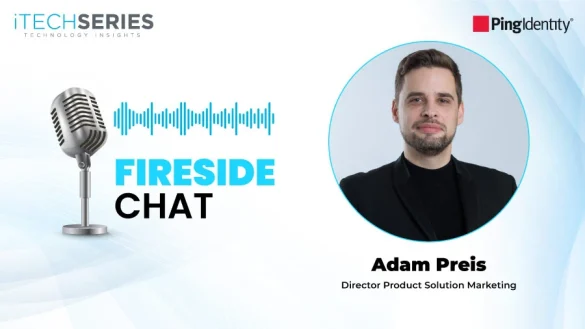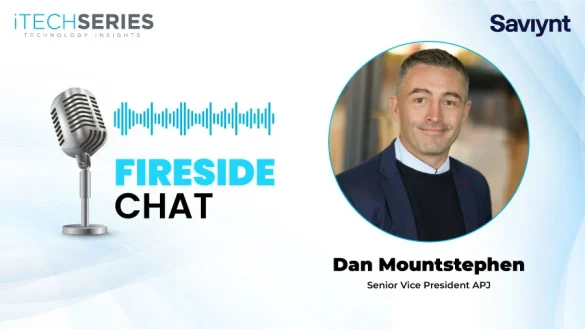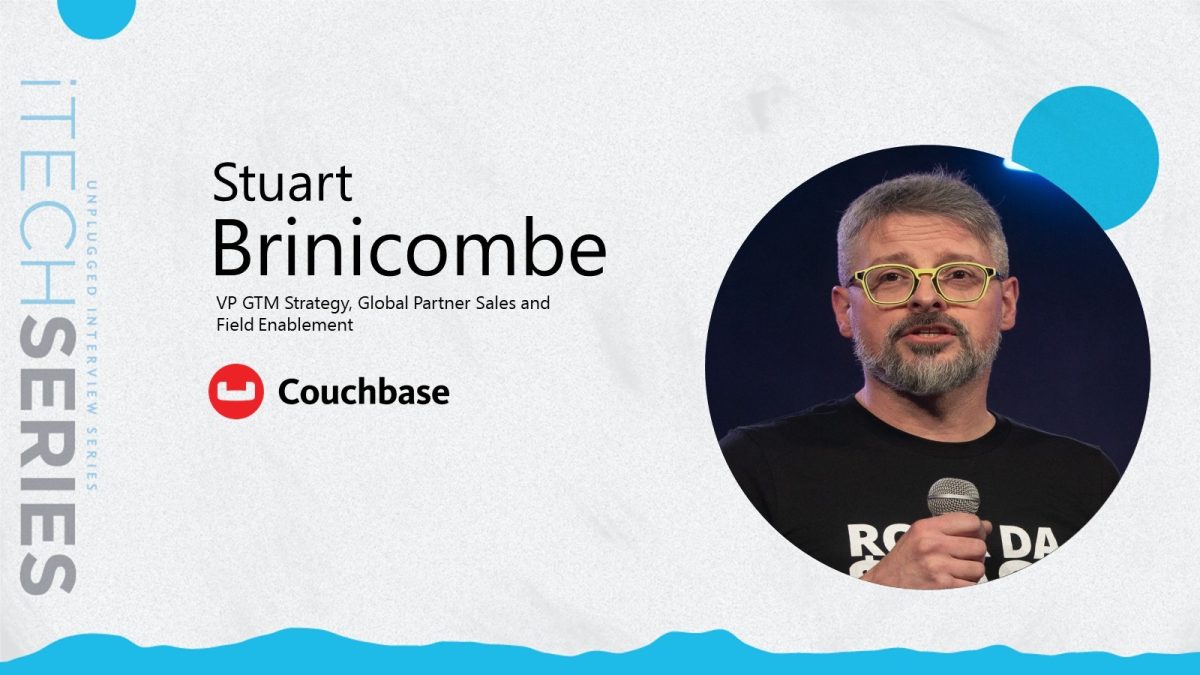Lalitha Ram, Director of Field and Account-Based Marketing at Fujitsu, shares her journey of transforming marketing into a strategic growth engine. She discusses evolving field marketing into a revenue catalyst, leveraging data intelligence and intent signals for precision targeting, achieving cross-functional alignment between sales and marketing, and balancing short-term pipeline goals with long-term brand building to deliver measurable business impact.
Welcome to the interview series, Lalitha. Could you tell us about yourself and your journey as a go-to-market leader?
I am a seasoned Go-to-Market (GTM) and Account-Based Marketing (ABM) leader who has built a career on driving measurable business growth through strategic marketing innovation, cross-functional alignment, and customer-centric storytelling. With over 20 years of global experience spanning technology, manufacturing, retail, and enterprise services, I have consistently transformed marketing functions into growth engines that influence multimillion-dollar pipelines. I see myself as a collaborative leader, bridging sales and marketing to create measurable impact. Being a technology-savvy marketer, I leverage the full GTM stack for efficiency and precision.
In your experience, how has the role of field marketing transformed within today’s modern, integrated revenue organizations?
In today’s modern, integrated revenue organizations, field marketing has evolved from an event-driven support function to a strategic growth catalyst, one that sits at the very intersection of marketing, sales, and customer success. Marketers have become the frontline architects in shaping hyper-targeted, personalized engagement strategies that deepen relationships with strategic accounts. They don’t just generate leads; they curate experiences that move decision-makers from the awareness stage to trusting their partners in their transformation journeys.
Marketers today are fully embedded within the revenue engine, working side-by-side with sales leaders, solution architects, and industry specialists. Success is no longer measured by MQLs or event attendance; it’s tied directly to account penetration and deal acceleration. Marketers today operate as data-driven strategists, leveraging MarTech tools to orchestrate omni-channel engagement. Insights from intent data, buying signals, and predictive analytics now inform where to focus effort, when to engage, and how to personalize the message.
Marketers today are experienced designers. From bespoke engagement forums to digital executive roundtables, the goal is to elevate brand perception and deliver meaningful, value-based interactions that strengthen trust and loyalty. They are as much a business partner as a marketer; they now align our marketing goals with the needs of sales, product, and delivery. They sit at the GTM table, influencing not just campaign execution but business strategy.
How do you use data and intent signals to effectively target accounts and personalize your marketing efforts?
My success as a go-to-market and ABM leader has stemmed from my ability to transform data into actionable intelligence. This has enabled the sales to engage with the right message at the right time. We have consistently bridged the gap between marketing analytics and sales outcomes by operationalizing data across every phase of the buyer journey.
By using tools that track customer interest and detailed market reports for each account and contact, we have identified the buying process and helped marketing and sales concentrate their efforts where there is real interest in buying. We elevated personalization beyond surface-level customization by using these insights to shape messaging, content themes, and engagement tactics.
For example, when an account showed increased interest around “cloud migration” or “supply chain resilience,” we crafted tailored narratives, curated executive-level content, and orchestrated personalized outreach through direct mail and video messages. This intelligence-driven approach ensured that every marketing touchpoint felt timely, relevant, and value-based, resulting in higher engagement and accelerated deal progression.
By connecting data across platforms, we built a feedback loop between marketing activity and sales conversion. We have mastered the art of turning data into strategic storytelling and transforming raw insights into compelling account narratives for executive briefings and sales enablement. Our approach marries data intelligence with human insight, enabling precision targeting, personalized engagement, and meaningful business impact.
What’s your approach to fostering collaboration between field marketing, demand generation, and sales teams?
My collaboration between cross-functional teams has been both a strategic and human-centric approach. Alignment with a cross-functional team is not a process, but it’s a mindset, and it is based on shared purpose, transparency, and data-driven trust. Marketing’s ultimate goal is not just generating leads but rather how we impact the revenue target.
The first step in this process is to ensure that field marketing, demand gen, and sales rally around the same metrics. By aligning around outcomes rather than activities, we have transformed siloed functions into a cohesive GTM strategy. This mindset has elevated marketing from a support team function to a strategic growth partner.
“Marketing is a business growth engine, not a support function; it earns credibility by speaking the language of business outcomes, revenue, pipeline, and customer value.”
As a marketer, how would you advice balancing short-term demand gen goals with longer-term brand building efforts?
Marketing isn’t a tug-of-war between short-term pipeline goals and long-term brand. It is a strategic harmony between the two and is executed with thoughtful, business-focused, and GTM leadership.
The approach should begin with alignment. We need to make sure that every marketing initiative (from a tactical campaign to a thought-leadership program) connects back to both immediate business goals and the broader brand narrative. So, instead of treating demand gen and brand building as separate tracks, you should always position them as interdependent pillars as part of your go-to-market strategy. You build a brand with demand, and you should be able to measure both sides of the coin. This will also help sales to tell the brand story.
Could you tell us about your most challenging yet memorable marketing program experience?
The most challenging yet memorable marketing program that I have led was almost certainly the CXO Engagement Series and Global Mobility Leadership Forum that I initiated. This initiative began as an ambitious idea: to engage senior executives from global accounts in a meaningful, thought-leadership-driven dialogue. This was at a time when in-person engagement was no longer possible and digital fatigue was at its peak.
We were tasked with creating a virtual experience that felt personal, strategic, and high-value for a C-suite audience who were already inundated with webinars and online events. The stakes were high, and we needed to maintain engagement across multiple industries and regions, align content with account priorities, ensure measurable pipeline influence, and rally cross-functional teams (sales, marketing, and delivery) around a shared GTM goal.
The logistics were complex. The technology ecosystem had to be seamlessly integrated across our digital and direct mail platforms, while the content demanded close coordination with industry leaders and thought partners around the world.
We approached the challenge not as an event, but as an executive ecosystem, curating sessions that went beyond product discussions to focus on shared business challenges, innovation insights, and co-creation opportunities. We built a narrative that positioned Fujitsu not as a vendor, but as a strategic growth partner, an approach that deeply resonated with CXOs. The results of this session were transformative, with a 70% engagement rate resulting in great follow-up discussions. The outcomes were not just measured in metrics but the shift it had created in our go-to-market strategy. This approach led us to change the way we evaluated and measured our campaigns and was a perfect blend of strategy, creativity & resilience. Innovation in marketing doesn’t come from having more tools or bigger budgets, but it comes from insights and the courage to experiment.
How do you evaluate and optimize your MarTech stack to align with business goals and evolving customer needs?
One of the most powerful tools in any marketer’s arsenal is data and the insights we can derive from it. By turning data into actionable intelligence, marketers today can not only design and execute more effective campaigns but also gain a deeper understanding of each account. These insights have enabled us to become trusted advisors and strategic partners to our sales teams, driving stronger alignment and measurable business impact.
Having the right MarTech platform is very crucial in this process.
- Understanding the tool and what business problem it is trying to solve is very important.
- Does this tool help us acquire, engage, or retain customers more effectively?
- Is it enabling better alignment between marketing, sales, and customer success?
- How does this tool align with our growth strategy?
- How does it integrate with our current tools and platforms, and are we able to get collective data from multiple platforms?
- Piloting a tool is important to make sure it will align better with the outcomes you desire.
As a marketing leader, what key lessons or takeaways have stayed with you over the years?
As a seasoned marketer, I feel marketing blends creativity, data, and human connection to drive impact. What is important to understand, or rather what others fail to understand, is that marketing is a business growth engine and not a support function, and I learned early on that marketing earns its credibility when it speaks the language of business outcomes, revenue, pipeline, and customer value. It’s also important to know that while data reveals where to focus, it’s how we narrate the story that will move people to act.
Alignment transforms results. When sales trusts marketing’s insights, and marketing listens to sales, then our meetings become more than just weekly updates. They are more dialogue-based on how to achieve the common revenue goals.
Having the right MarTech tools that align with your business and marketing goals. They need to help you drive the results you need. And lastly, remember that what works today won’t necessarily work tomorrow, so great marketing isn’t about playing it safe; it’s about testing, learning, and evolving faster than the market.
About Lalitha Ram
Lalitha Ram is a marketing maverick with over two decades of experience navigating business growth using a GPS fueled by data, creativity, and strategic expertise. She has successfully led Global GTM, ABM, and Demand Gen engines for startups and global enterprises. Known for transforming marketing functions into growth engines that drive multimillion-dollar pipelines, she excels at cross-functional alignment and customer-centric storytelling.











